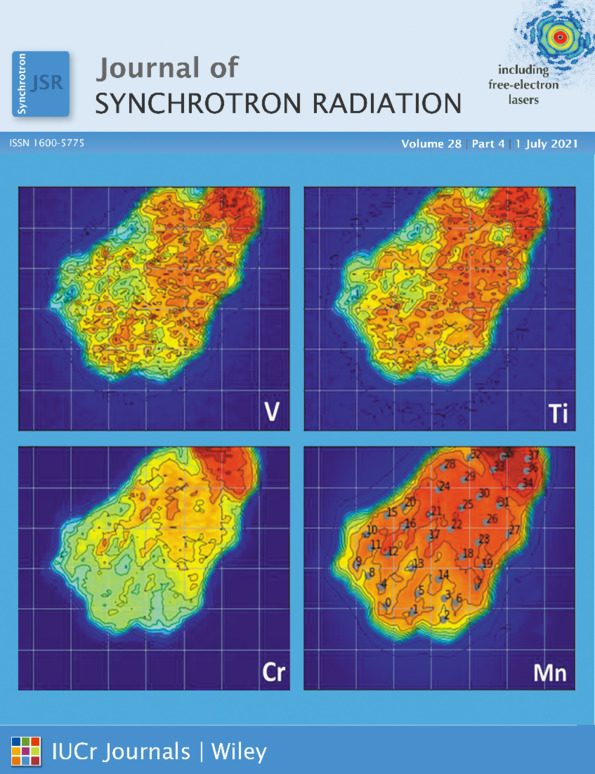Reducing the thermal deformation of InSb crystal by using double-bounce HHRMs in the TPS tender X-ray absorption spectroscopy beamline
Abstract
The Taiwan Photon Source (TPS) with high brightness and energy tunability is suitable for applications in spectroscopy. The tender X-ray absorption beamline will be optimized for X-ray absorption spectroscopy measurements using a bending-magnet source in a unique photon energy range (1.7–10 keV) and two crystal pairs [InSb(111) and Si(111)] separated using back-to-back double-crystal monochromators (DCMs). InSb crystals are typically used in the lower photon energy range of 1.7–3.5 keV. However, the poor thermal conductivity of InSb crystals leads to severe deformation. This factor should be considered when the monochromator is installed on a tender X-ray beamline in a storage ring with a high power density. There are many approaches to reducing the thermal load on the first crystal of a DCM. Double-bounce high harmonics rejection mirrors in front of the DCM serve not only to reduce the high-order harmonics but also to absorb considerable quantities of heat. Two coating stripes on the silicon surfaces with a variable incident angle will be key to solving the thermal load on this beamline.




